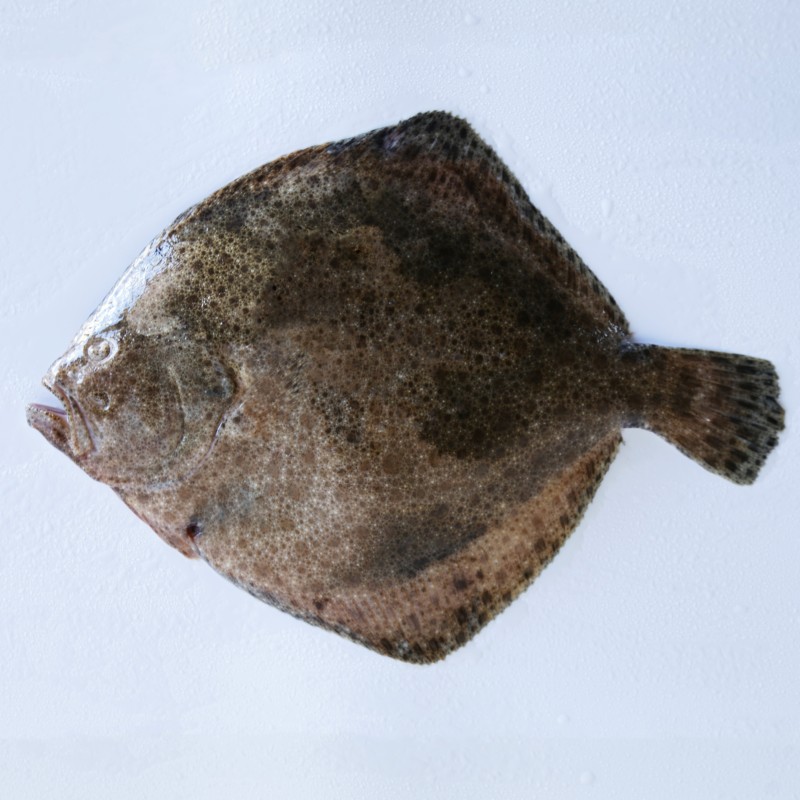Wild turbot (psetta maxima) can be fished in shallow waters (from 1 to 2 metres up to 100 metres) in the Atlantic, the North Sea, the Arctic, the English Channel and the Baltic coasts. It’s also found in Morocco and the Mediterranean Sea.
The Turbot has a flat body that’s diamond-shaped, asymmetrical and almost circular. It’s covered with hard lumps, but without scales. It blends in with its environment. Generally greyish brown in colour, it has numerous spots, a whitish belly and a large mouth. Its eyes are very small and found on the left side of its body.
Turbot is an easily digestible semi-fatty fish, recommended for digestive disorders and weight loss diets. Nutritionally, it provides a good number of minerals (phosphorus, magnesium and potassium) and vitamins (B2, B3, B9 and B12), especially vitamin B9 (folic acid), which it provides in greater quantities than other fish.
Due to the high quality of its meat, it’s best to handle it as little as possible in the kitchen, meaning it’s perfect grilled, roasted whole in the oven, boiled, or steamed. It can also be delivered in fillets, but it maintains its properties better whole before being separated into fillets for serving, along with some sauce.
Name: Turbot (Psetta maxima)
FAO 3-alpha code: TUR
Catch or farming area: FAO-27
Sub-area: To be specified at time of delivery
Method of production: Captured
Fishing gear: Gill nets and similar
Store between: 0-4°C
IMPORTANT: The net quantity and expiry date of the product shall be specified at the time of delivery.




